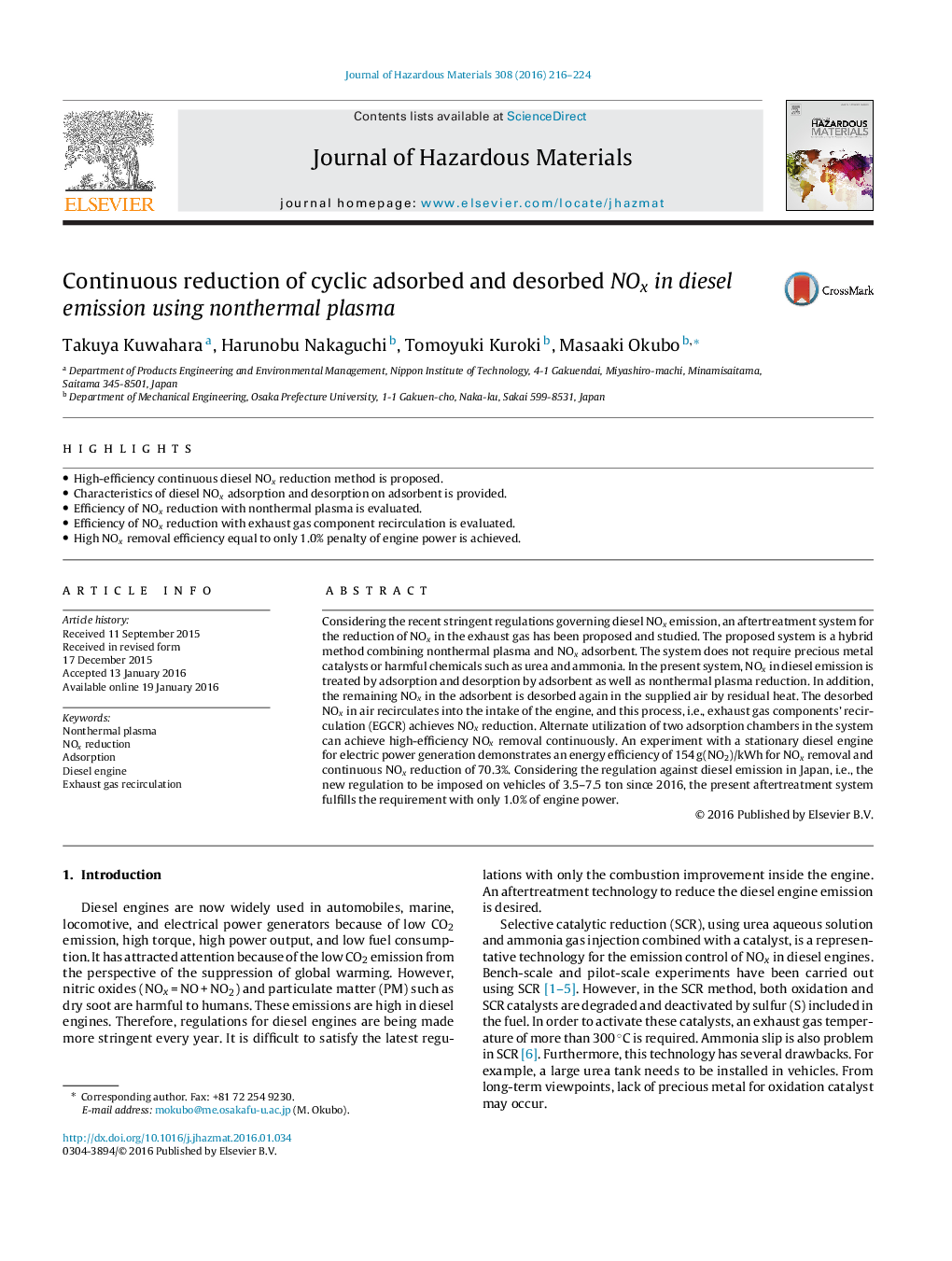| Article ID | Journal | Published Year | Pages | File Type |
|---|---|---|---|---|
| 575428 | Journal of Hazardous Materials | 2016 | 9 Pages |
Abstract
Considering the recent stringent regulations governing diesel NOx emission, an aftertreatment system for the reduction of NOx in the exhaust gas has been proposed and studied. The proposed system is a hybrid method combining nonthermal plasma and NOx adsorbent. The system does not require precious metal catalysts or harmful chemicals such as urea and ammonia. In the present system, NOx in diesel emission is treated by adsorption and desorption by adsorbent as well as nonthermal plasma reduction. In addition, the remaining NOx in the adsorbent is desorbed again in the supplied air by residual heat. The desorbed NOx in air recirculates into the intake of the engine, and this process, i.e., exhaust gas components' recirculation (EGCR) achieves NOx reduction. Alternate utilization of two adsorption chambers in the system can achieve high-efficiency NOx removal continuously. An experiment with a stationary diesel engine for electric power generation demonstrates an energy efficiency of 154Â g(NO2)/kWh for NOx removal and continuous NOx reduction of 70.3%. Considering the regulation against diesel emission in Japan, i.e., the new regulation to be imposed on vehicles of 3.5-7.5 ton since 2016, the present aftertreatment system fulfills the requirement with only 1.0% of engine power.
Related Topics
Physical Sciences and Engineering
Chemical Engineering
Chemical Health and Safety
Authors
Takuya Kuwahara, Harunobu Nakaguchi, Tomoyuki Kuroki, Masaaki Okubo,
